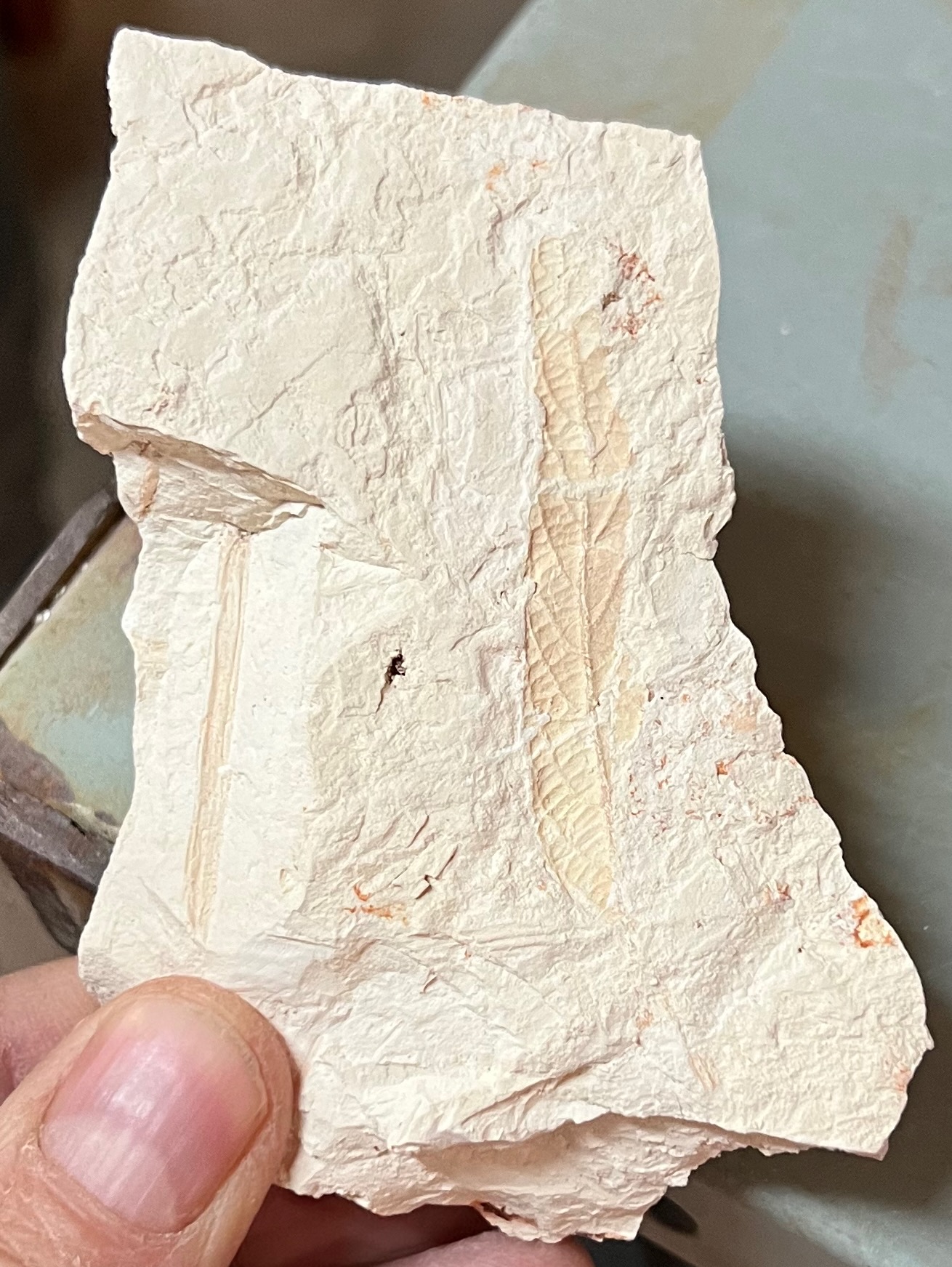| Monthly Tech-Tip | No tracking! No ads! | |
Mother Nature's Porcelain: The lumps in the quarry
This 50 lb lump is from a quarry where we are mining the Whitemud Formation in southern Saskatchewan. This layer is extracted from the top of a hill at the bottom of a valley, putting it more than 50 meters below the prairie surface. The lumps are extremely dense and very heavy. They are also quite damp, about 12% by weight fossil water. They exhibit this horizontal layering, a clear indication of the sedimentary nature of the deposit. The clay is exceedingly fine-particled and the silica present exists in rounded grains finer than about 150 mesh. There are flecks of high-carbon material and some tiny iron particles. When lumps like this dry out when exposed to the sun they break down into thousands of pure-white pieces. These dry lumps slake quickly in water to create a creamy smooth slurry from which I can easily sieve out the carbon and iron particles to produce the hyper-smooth natural porcelain.
Related Pictures
Leaf fossil found in Plainsman 3D raw material

This picture has its own page with more detail, click here to see it.
Casey Larson, our shipper and a pottery enthusiast, found this while breaking lumps on a stockpile. This is an unusual find. The vast majority of fossils we find are preserved in iron stone concretions in the A1 top layer, they are hard and stay intact. Layers below that are highly plastic, as their lumps weather (many of which arrive the size of microwave ovens) they shrink and break down into smaller and smaller sizes. But our PR3D material (the majority ingredient in Ravenscrag Slip and the lowest layer we mine) is less plastic, so the lumps stay intact better as they dry. As a result, this beautiful fossil imprint has been preserved. This lump has been bisque fired to make the impression durable (thus the lighter color). 3D is the cleanest and most consistent clay in the quarry.
Videos
Links
| Projects |
Mother Nature's Porcelain - Plainsman 3B
This Saskatchewan clay contains natural feldspar, quartz and a variety of clay minerals, all blended by nature, to produce a porcelain, that although not white-burning, rivals or exceeds the strength achievable using industrial imported minerals |
| Articles |
How to Find and Test Your Own Native Clays
Some of the key tests needed to really understand what a clay is and what it can be used for can be done with inexpensive equipment and simple procedures. These practical tests can give you a better picture than a data sheet full of numbers. |
Got a Question?
Buy me a coffee and we can talk

https://digitalfire.com, All Rights Reserved
Privacy Policy

